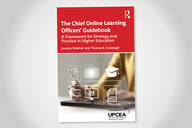You have /5 articles left.
Sign up for a free account or log in.
You don’t need a crystal ball to sense how higher ed, post-pandemic, will evolve. Here’s one potential scenario …
Many small, less selective religious and rural private colleges, without significant endowment or networks of influential alumni, will likely perish.
With a few notable exceptions, liberal arts colleges and regional comprehensives, especially those located far from major population concentrations, will experience chronic, severe economic stress -- inevitably eroding the quality of the education that they provide.
Because of their affordability and location, urban publics and their suburban counterparts will fare well in terms of enrollment. But, depending on their ability to attract working adults, tap donors, forge corporate partnerships and leverage political connections, these institutions, too, will likely experience very strained finances.
Meanwhile, the mega online providers like Western Governors, Southern New Hampshire and Arizona State, will flourish as a by-product of low-cost, accelerated-time-to-degree and job-aligned programs. All that major marketing muscle won’t hurt, either.
At the same time, the larger, more highly selective institutions with national or international reputations and serious endowments will also thrive. By offering an extraordinarily wide range of programs in cutting-edge fields, exceptional student support and activities, and robust financial aid packages, these flagships and prestigious privates will continue to set a standard that fewer less renowned institutions will be able to emulate. Needless to say, they will continue to represent a small total percentage of all enrolled students.
We need to ask ourselves right now: Is this the future we want -- an increasingly stratified, highly differentiated higher ed ecosystem?
Are the winners the ones we’d like to see win?
To even pose these questions is to answer them.
Even before the current health crisis, the bifurcation of higher education had already laid the groundwork for the overly stressed and pressured high school years of talented, ambitious students and their parents.
We created a landscape that pitted highly resourced, highly selective, highly prestigious institutions against their more humble and obscure competitors -- which not only invited the Varsity Blues scandal, but which has contributed to the high rates of depression, anxiety and unhappiness among large numbers of adolescents.
Do we really want to worsen this situation by narrowing opportunities for a quality education?
My colleague Michael Rutter mentioned, in an email message, HBO’s recent show His Dark Materials, a contemporary retelling of Milton’s Paradise Lost based upon the books by Philip Pullman. The show’s endangered hero is taken to Oxford for protection. As Michael observed, “The theme of ‘academic sanctuary’ comes up again and again in the show -- something worth protecting, even if seemingly outmoded.”
The institutions that are most threatened are precisely those that provide “academic sanctuary” for the students who need our help most: those diamonds in the rough who come from economically disadvantaged homes and received an uneven high school education. These are the students who will benefit most from “regular and substantive” interaction with a skilled, caring faculty member.
I fear that we have established a higher ed hierarchy that controverts the premier value of this point in time: equity.
We -- and I include myself in this indictment -- tell high schoolers to get into the best college or university that they possibly can. Then we define this not in educational terms -- an institution dedicated to undergraduate education that offers close interaction with faculty, a multifaceted commitment to student support services and extensive opportunities for experiential learning -- but breadth of majors; gleaming, gold-plated facilities; a pristine campus and, of course, athletic success.
As a bachelor’s degree becomes what a high school diploma once was -- a ticket into a middle-class-paying job -- students, more than ever, need a solid liberal arts education as a foundation for future learning and advancement.
If we were honest with ourselves, we would recognize that many promising students will receive a far better education at Paul Quinn or Texas A&M San Antonio than at many more esteemed institutions.
As a society, we are, as the cliché puts it, at a crossroads or inflection point.
We can embrace the “bigger is better” model -- larger universities with more programs and greater efficiencies through scale -- and let the “laggards” fall by the wayside, jettisoning humanities and social science majors, relying increasingly on part-time instructors and offering a narrow, job-focused curriculum. Or we can do everything we possibly can to convince government, at all levels, to ensure that the opportunity to receive a quality liberal education isn’t confined to those who can attend a shrinking number of highly selective institutions.
As my colleague Michael Rutter put it, “Higher ed isn’t akin to health care. Meaning, I don’t think it should be seen a right … but instead as an opportunity that is readily available (with strings attached), but not ones so onerous to result in massive debt, a subpar online-only experience, etc. It’s a social contract -- at least one with a society that values education.”
Amen.
Steven Mintz is professor of history at the University of Texas at Austin.



